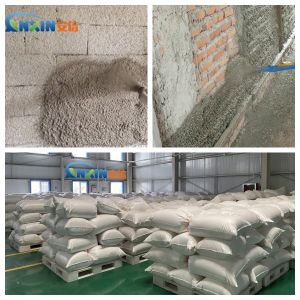Redispersible polymer powder (RDP) is a free-flowing powder material produced by spray-drying an emulsion polymer. It is widely used in building materials such as dry-mix mortar, tile adhesive, putty powder, self-leveling, and exterior wall insulation systems. Its most significant feature is its ability to redisperse in water, returning it to a polymer latex with the properties of its original emulsion, thus imparting excellent adhesion, flexibility, and water resistance to the material. The RDP manufacturing process involves multiple key steps, from raw material selection to finished product packaging. The following will detail the overall process, core technical aspects, and quality control.
1. Raw Material Selection and Emulsion Preparation
RDP production is based on emulsion polymers. Common polymer systems include vinyl acetate-ethylene copolymer (VAE), acrylic esters, and styrene-acrylic esters. Different polymer systems determine the performance characteristics of RDP. For example, VAE systems offer excellent flexibility and adhesion, making them suitable for tile adhesives and insulation systems; while pure acrylic emulsion systems offer weather resistance and UV resistance, making them commonly used in exterior wall putties or coatings.
Emulsions are typically prepared using an emulsion polymerization process. Using water as the dispersion medium, emulsifiers, initiators, and temperature control, monomers undergo polymerization to form a stable polymer emulsion. This step requires strict control of particle size distribution, solids content, and viscosity to ensure the stability and performance of the final product.
2. Spray Drying Process
After the emulsion is prepared, it is converted into a powder through spray drying, which is the core step in RDP manufacturing. The process steps include:
Spray Atomization: The emulsion is atomized into extremely fine droplets using a high-pressure nozzle or centrifugal atomizer. The droplet diameter is typically controlled to tens of microns to ensure drying efficiency and powder uniformity.
Hot Air Drying: The atomized droplets come into contact with high-temperature hot air (approximately 120-180°C), rapidly evaporating the water and drying the emulsion particles into solid microparticles. This process requires a balanced temperature and time to avoid overheating that could cause the polymer to melt or decompose.
Surface Coating and Anti-Stick Treatment: Because polymer particles are prone to sticking, a protective colloid, such as polyvinyl alcohol (PVA), is often added during the drying process to form a protective film. This prevents powder from clumping and facilitates rapid redispersion in water.
Air Classification and Collection: After drying, the finished powder is collected using a cyclone separator and bag filter to ensure uniform particle size distribution and remove fine dust.
3. Quality Control and Modification
Quality control is crucial throughout the entire manufacturing process. Key testing indicators include:
Particle Size Distribution and Flowability: Ensure uniform dispersion of the powder in the dry mix, preventing agglomeration.
Residual Moisture: Generally controlled within 1%-2% to prevent moisture and agglomeration during storage.
Redispersibility: This tests the powder’s dispersion rate and particle size recovery in water, which are key indicators for evaluating RDP quality.
Adhesion Strength and Flexibility: This is tested through experiments with mortar systems to examine its effect on improving building material performance.
Some products also undergo functional modification, such as adding a hydrophobic agent to improve water resistance or introducing a flexible monomer to enhance crack resistance. These modifications enable RDP to meet the specific needs of various building applications.
4. Packaging and Storage
RDP finished products are typically packaged in multi-layer composite paper bags lined with moisture-proof film, with a typical size of 20 kg per bag. Storage should be kept away from moisture and direct sunlight, and the warehouse temperature should be maintained between 5°C and 35°C. Proper packaging and storage are crucial to ensuring the shelf life of RDP (typically 12 months).
The manufacturing process for redispersible polymer powders is a comprehensive technology that combines polymer chemistry, emulsion polymerization, spray drying, and powder engineering. Through rigorous quality control throughout the entire process, including raw material selection, emulsion preparation, spray drying, and quality control, we produce RDP products with excellent dispersibility and application properties. Its widespread use in modern building materials not only enhances construction performance but also promotes the development of green building materials.
Post time: Aug-29-2025

